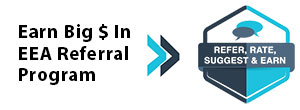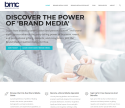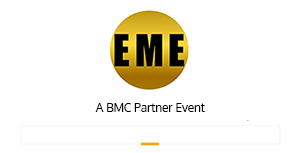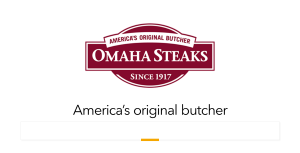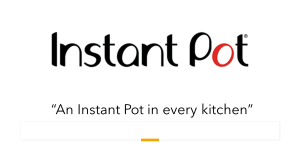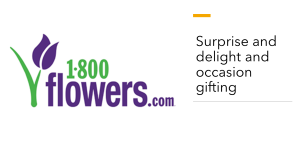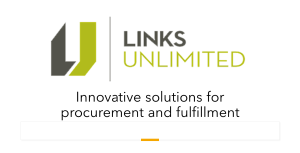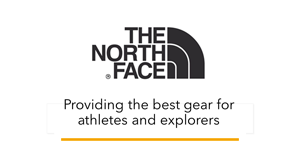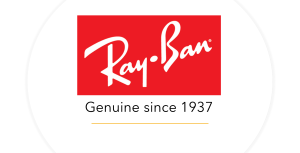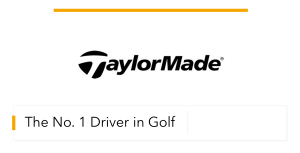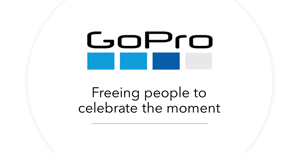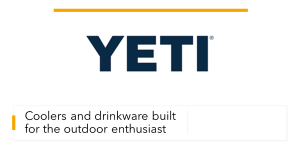Market Report: Incentive Travel, More Individualization and Measurement
Rick Garlick, Incentive Research Foundation
Annette Gregg, Society for Incentive Travel Excellence (SITE)
Melissa Van Dyke, Creative Group Inc.,
Jacque Busby, Luxe Incentives
Paul Ferreira, HMI Performance Incentives
Susan Adams, Next Level Performance
Mike May, Brightspot
Andrew Johnson, IMA Europe
Interviews with the key associations and incentive travel firms finds an increased focus on travel programs offering more free time, individualized experiences, and authenticity; growing interest in affordable, more off-the-beaten path destinations with a story; an increase in individual travel to address participant desires as well as group travel inflation; the growing influence of ESG (Environmental, Social, Governance) on destination selections (more in Europe than the US), and a greater focus on program measurement.
Rick Garlick, Incentive Research Foundation, .jpeg)
“The biggest trend right now is the move away from ‘one-size-fits-all’ incentive travel experiences to more of an individualized experience,” says Rick Garlick, Principal Consultant, Richard Garlick and Associates and Chief Advisor for the Incentive Research Foundation, which late last year published its annual 2022 Incentive Travel Insights Index. Growth is being driven by the desire for incentive travel, according to the survey.
"The No. 1 thing people want is personal time to decompress and relax. They want choice and flexibility rather than too much structure. They want privacy and don’t necessarily want to be among large groups as they have in the past. Participants also want out-of-pocket expenses covered, which is why all-inclusive resorts have become more popular. It’s a tough era for incentive travel planners, because costs have sky-rocketed, and they are trying to find the best deals without sacrificing motivational quality. A lot of accommodations have struggled, as has everyone else, to fully staff their properties so planner expectations are sometimes difficult to meet. It’s the bad intersection of rising costs along with staffing challenges that sometimes makes for a challenging environment.”
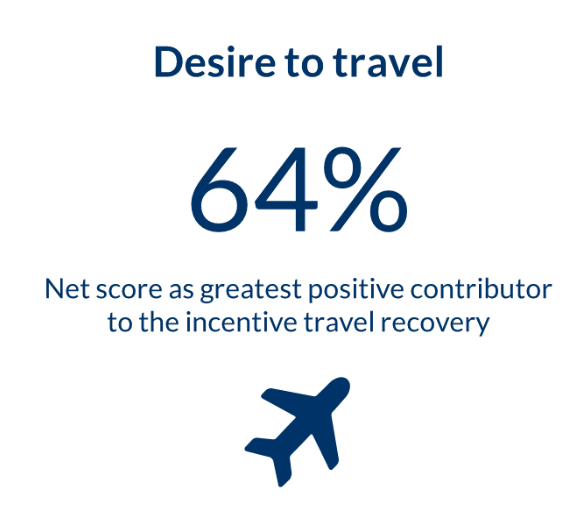 Garlick points out that “you can’t ever replace an incentive trip with a video event. In terms of meetings, the 2023 American Express Global Meetings and Events Forecast suggests that in-person event attendance should return to normal in the next few years. In fact, 63% of meeting planners surveyed believe meeting attendance will return to normal within the next one to two years. Video has taken the place of many smaller in-person meetings, e.g., people don’t fly across the country to have lunch nearly like they used to. But people would still rather have face-to-face meetings for the large events.”
Garlick points out that “you can’t ever replace an incentive trip with a video event. In terms of meetings, the 2023 American Express Global Meetings and Events Forecast suggests that in-person event attendance should return to normal in the next few years. In fact, 63% of meeting planners surveyed believe meeting attendance will return to normal within the next one to two years. Video has taken the place of many smaller in-person meetings, e.g., people don’t fly across the country to have lunch nearly like they used to. But people would still rather have face-to-face meetings for the large events.”One of the big challenges, Garlick expands upon, is that “travel costs have gone through the roof. Budgets have increased, but this is pretty much to cover increased costs. Some very desirable incentive trip locations like Hawaii have become unaffordable for many organizations. Mexico is a popular location because of its proximity and relative affordability, but there are signs of some ‘Mexico fatigue’ and that a traditional Mexico incentive trip is not as motivational as it once was. At the same time, the high costs of popular locations have opened opportunities for new, previously underutilized locations, in places like Mexico as well. People like the idea of ‘cultural authenticity, and are looking for safe places that can provide them.”
Garlick says that “’bleisure’ has become a very popular term, as Millennials in particular will frequently combine business with leisure. With remote work becoming so common, it makes it all the easier to extend a work trip. The vast majority of those attending an incentive trip or meeting will extend their trip, either before or after.”
Even as the Covid pandemic and its impact subsides, “adventure travel, wide-open spaces, and beaches, e.g., anywhere that doesn’t force close proximity with people are the most desired locations. Flexibility, choice, and privacy, which are often more characteristic of individual travel experiences, now have to be integrated into the design of group experiences as well.”
Annette Gregg, Society for Incentive Travel Excellence (SITE)

“The volatile social-political world in which we live is a petri dish for a magnificent proliferation of diverse trends,” observes Annette Gregg, CEO of the Society of Incentive Travel Excellence. “Environment, Social and Governance (ESG) considerations are now beginning to impact on destination selection with corporations increasingly mindful around how their presence in a particular state or nation might be perceived – think Qatar’s hosting of the soccer world cup and the attendant controversary.”
Another trend, she says, “is the ongoing blurring of the lines between what might be termed a pure incentive, that is, a contested, paid-for trip that an employee qualifies for, and a paid-for company trip staged to bring together a fragmented, disparate workforce due to the post-Covid shift to work from home. Both are fully hosted trips and share core objectives around alignment, engagement, fostering of company culture etc., but only one follows the indispensable definition for incentive travel – the fact that you must qualify for it.”
Gregg calls out the sectoral and regional diversity regarding trends for incentives. There are, of course, some trends that apply to everyone, everywhere but, more and more, regionality and sectoral difference is becoming dominant. So incentive planners in North America show far less appetite for sustainability concerns than United Kingdom planners; incentive travel has roared back in the US while in Europe it’s a far more muted resurgence.” Another example, “The US finance and insurance sector is far more focused on incorporating program elements that foster relationships than the direct selling sector.”
The digital conferencing phenomenon has not directly affected incentive travel, she underlines. “Incentive travel is the quintessential face-to-face reward. It cannot reasonably be replicated in any virtual or hybrid iteration. The pandemic proved that. That said, video and virtual are definitely deployed far more than ever in the incentive travel process with virtual familiarization trips and site inspections. These don’t impact the qualifier at all but they do add efficiencies for the purchasing process.”
Gregg is not sure of the impact of inflation and a potential recession on the business. “It could go either way. Many companies cut travel and travel rewards when faced with financial challenges. Other companies double down on them as they drive the sales process.”
She sees a continued increase in “bleisure” travel, which she notes “is a long-established practice in the field of trade and professional associations and the meetings and conferences that are an integral part of that business. For decades, convention delegates have used their attendance at annual events to immerse themselves in destination delights, often having significant others and family join them. Corporate travelers, on the other hand, tended to be more ‘in and out’ in their travels and more attuned to company schedules. However, the focus on work/life balance (a pre-Covid trend) and then the lessons of Covid have impacted corporate approaches to travel too, with a greater focus on seizing available opportunities and ‘living the moment’. This means greater blending of work time and personal time – we’ve become adept at this since work-from-home became a thing – resulting in a decisive increase in bleisure travel.”
She says that “all the hype about ChatGBT probably won’t significantly affect trip delivery or the participant experience, but I do believe that technology, particularly AI, will become more and more influential across all the entire eco-system. ChatGBT has magical properties that will revolutionize marketing communications and, in particular, copywriting. Will anyone ever write an original destination description again when ChatGBT can give you give paragraphs on best restaurants in Rome in seconds?”
Melissa Van Dyke, Creative Group Inc.
.jpeg) A focus on more effective program design; a more strategic mix of digital and face to face, a greater emphasis on building relationships at events are among the key trends cited by Melissa Van Dyke, Senior Vice President of Global Customer Experience and Insights for Illinois-based Creative Group Inc.
A focus on more effective program design; a more strategic mix of digital and face to face, a greater emphasis on building relationships at events are among the key trends cited by Melissa Van Dyke, Senior Vice President of Global Customer Experience and Insights for Illinois-based Creative Group Inc.The pandemic forced companies to tackle many big changes, such as the issue of work from home, “and as part of that we are being more challenged to demonstrate to our clients the outcome and value of the program....What value does the retention and attraction of these employees or dealers provide for our clients. If it's a non-captive audience, what do we know from a measurement standpoint about what they thought or felt about the company or product, before they came to this event versus afterwards; absolutely measurement is front and center.”
A greater interest in program results as well as inflation are driving changes in program design. “We see a growing number of clients re-evaluating their rule structures for their top-performer programs or looking at more tiered programs. There's a lot of things driving that, first and foremast the rules that have worked in the past for their programs may no longer work.” In one case, it might be because a product has become so successful, the plateau levels of the program must be adjusted, in some cases because the projected number of hotel rooms has been exceeded in a time of tight demand. Other factors, she explains, might include a desire to better engage the middle 60%. “Clients are much more willing to engage in program design questions than in the past. There is a growing recognition that we can measure many more things now. There's so much data, the question becomes what do we with it? And is it even meaningful? So that also leads us to better conversations and questions around how to design more effective programs.”
As to program formats for motivational events, the pandemic, she says, presented “one of the grand experiments” that will have a significant impact on event design going forward. Digital, she says, works very well for training. “For example, when you do training, it is fantastic to be able to record the training that can be added to a digital library. For basic training, digital works very well.” Beyond that, she believes digital can also enhance face-to-face events by “enabling organizations to prepare people for the conference or other event by adding a digital component both before and after the event to share experiences and insights.”
On the other hand, she adds, “we have found that digital is not the best way to create relationships, to collaborate or to ideate. So, if an organization is convening its people to accomplish these goals, it might create a digital space where everyone can look at the content; then come together, experience and talk about it, and then create face-to-face opportunities for people to develop an action plan.” In effect, digital, she believes, “can be used to make the time people spend together more productive.”
The days of eight hours of keynote speeches and panel discussions, she believes, are waning. For motivational events, “the production has shifted: it has to be a lot more about the audience than it ever was in the past. If you are doing the traditional Power Point and it’s just four hours of content, it’s very difficult to get people to rally around that.” Today, the format might be a short keynote and then breaking people into groups or different spaces to talk about the information. Or maybe the attendees experience something like a trade show floor, where they can go from table to table to discuss different ideas. It all depends upon the meeting’s purpose, she underlines.
In the world of pure incentive travel, “another big shift Is that the work doesn't stop when you go to the meeting, so you need to give people some extra free time in that agenda.” The pandemic caused a surge in demand in travel, and many large clients still seek tier one destinations, but she says her company is seeing more interest in lesser-known destinations with a story, such as Portugal in Europe or St. Lucia in the Caribbean. Because so many incentive travel winners are themselves experienced travelers, program designers must be ever more creative in finding local experiences people can’t easily discover on their own.
“We have really entered the era of integrated marketing in incentive travel. That will mean figuring out how we can better keep the participants connected throughout the year, starting with where they find their leaderboards on the incentive platform.”
Jacque Busby, Luxe Incentives
.png) As a specialist in incentive travel for over 30 years, Jacque Busby, Founder and CEO, says she started to actively sell return-on-investment in the early 2020s using a process based on statistical process controls developed by an independent consultant Bob Dawson, now retired, based in part of the Master Measurement Model created by American Productivity and Quality Center for the SITE Foundation at its time of publication. “I believed this was the right decision because the only time we lost clients was when a new CEO came in and asked about the ROI of the program, which is often a significant line item, and our client couldn’t provide it.” That said, “there was little interest from our clients in investing in ROI analysis. Those who believe in the programs don’t need convincing, and those that don’t are hard to convince without data.”
As a specialist in incentive travel for over 30 years, Jacque Busby, Founder and CEO, says she started to actively sell return-on-investment in the early 2020s using a process based on statistical process controls developed by an independent consultant Bob Dawson, now retired, based in part of the Master Measurement Model created by American Productivity and Quality Center for the SITE Foundation at its time of publication. “I believed this was the right decision because the only time we lost clients was when a new CEO came in and asked about the ROI of the program, which is often a significant line item, and our client couldn’t provide it.” That said, “there was little interest from our clients in investing in ROI analysis. Those who believe in the programs don’t need convincing, and those that don’t are hard to convince without data.”Her past experience notwithstanding, she says she has doubled-down on a measurement approach with the creation of an Enterprise Engagement portal that her company has customized to engage a program audience throughout the year with e-newsletters, content, surveys and feedback, social recognition, referrals, suggestions, and more. “We believe that the data generated by managing relationships digitally across the year provides an entirely new level of performance measurement.”
Busby agrees in the shift toward more creative destination selection and authentic experiences, citing a dude ranch experience her company last year produced for a dealer group or another at a deluxe luxury resort in a historic Cape Cod town—both of which she says enabled participants to have a more intimate authentic setting in which to better get to know one another in a memorable way.
Paul Ferreira, HMI Performance Incentives 
Very few people have more experience in the incentive business than Paul Ferreira, CEO and Founder of 43-year-old Massachusetts-based HMI Performance Incentives. “We are getting back to the roots of what incentive travel really means – demand for and delivering authentic connections with destinations. People want to do business in places that have meaning, where memorable connections can be made. This means destinations with strong character and identity – like Nashville, Barcelona, Banff to name a few.”
He explains that “experiencing a private Nashville honky-tonk evening, an artist-led museum tour in Barcelona, or a birds-of-prey demonstration in Banff leave lasting memories, beyond a golf course or a beach. There’s a desire to travel in a different way that involves more people-to-people connection (with each other and the local culture) and engagement; incorporating a walking tour of a local market in Madrid, for example, to meet local producers and learn about culinary highlights before a cooking class, tapas style dinner and flamenco show; focusing on opportunities to strengthen relationships with customers while on the trip – providing an experience above and beyond a transactional reward.”
This could mean “infusing informal gathering opportunities at happy hours or on the golf course, with giveaways or prizes throughout, or exclusive intimate gatherings like a private VIP dinner in a wine cave in Napa. Today, it’s more than just lying on the beach or drinking at the pool; it’s about shared experiences around something more meaningful and memorable. This can include a CSR (Corporate Social Responsibility) giveback activity that everyone can participate in. This spring, in Las Vegas, we’ll have 400 people assembling food and hygiene packs to support a local food bank.”
He says that HMI’s commitment to incorporating a “CSR experience or donation on every program has been met with great enthusiasm, an overwhelming positive onsite reception with participants, and often a matching donation from the client to further increase the positive impact of their trip. We recently had a trip where local artisans were invited to a marketplace set up at the hotel – one of the vendors represented a local organization that provides training to underprivileged women to learn new trades, including how to make jewelry. People were able to learn about the program, watch custom bracelets being made onsite, and understand how their purchase went to supporting a worthy cause.”
As a result of what was learned about what can be accomplished with digital technology during the pandemic, more clients are “incorporating team-building experiences to enhance in-person engagement, rather than just holding a traditional meeting in a boardroom, which easily could be done on video. We recently had a client that included the Build-a-Bike experience to complement a meeting, and then the group was able to participate in the presentation of the bikes to a local non-profit, witnessing the thrill of knowing dozens of children would benefit from their efforts. Post Covid, there are new expectations around delivering creative, engaging, interactive experiences that provide something beyond what could be accomplished on a video meeting.”
Inflation is a significant factor. “The costs of operating an incentive trip have risen exponentially, across the board in air, food and beverage, and hotel costs, with space in record high demand. Dealing with sticker shock with clients from one year to next. Although daunting, we work with the desire of the buyer to overcome these obstacles and implement a program within budget goals – looking at options to give participants more free time or a shorter trip, or considering a less-expensive destinations that would deliver a similar experience. We have great success with lesser-known incentive destinations like Santa Fe, for example, which exceeds expectations and offers a rich variety of cultural experiences aligned with a moderate budget. In fact, we often hear these are the best-received trips.”
Bleisure or program extensions for participants from business meetings are on the rise. “We see clients wanting to include pre- and post-event stays in their room blocks up front, to proactively make sure the opportunity is available for participants to extend their stays.”
Other trends:
“We still see a strong focus on and demand for domestic destinations – less related to health and safety concerns than it was in 2021 and 2022, though still important, but now also to avoid the hassle of passport renewals for participants (which can take over three months) and avoiding the risk of air travel complications. There is a focus on destinations that provide a hassle-free experience and reduce travel connections.”
Higher budget clients, he adds, “are willing to move away from all-inclusive properties to provide participants more immersion opportunity in the local destination and culture - whereas budget sensitive clients are still focused on the all-inclusive product and ease and value that it provides.”
To the delight of the cruise line industry, “Cruises have made a big comeback with these clients too – we’ve recently booked groups to Alaska, New England-Canada, and several Caribbean sailings, and find strong interest in European river cruises as well."
Susan Adams, Next Level Performance 
The research and insights of industry groups are supported by what 46-year old Next Level Performance sees happening in the market, says Susan Adams, Vice President of Engagement Strategy at Next Level Performance, and Chair Elect of the Incentive Research Foundation (IRF) Board of Trustees.
“The 2022 Incentive Travel Index (ITII) study tells us that 91% of buyers and sellers of incentives indicated that incentive travel has a more important role in building engagement and company culture with a dispersed workforce. That research is supported by what we’re seeing consistently: there’s an intense demand to bring people together. As a result of the restrictions on travel in recent years, we’re seeing an increased interest in international programs. And we’re seeing an increased frequency of late bookings.”
Next Level sees “very little current demand for video-based meetings. Remote-based organizations spend much of their everyday in video meetings. With an increase in remote or hybrid workplaces, and a recent history of travel restrictions in some organizations, the opportunity for face-to-face networking between employees or with customers is more important than ever.”
To date, she adds, “inflation, or the threat of a potential recession, does not seem to have affected the pace of interest in meetings and events. We have seen some slower decision-making, but overall clients appear to be moving ahead with their planned meeting strategies. Some programs are being adapted to fit revised budgets, but optimism on spend continues to be high.” She adds that, “according to the recent Incentive Travel Index study, 64% of respondents indicated that spending will be “above” or “significantly above” 2019 levels by 2024; 80% of respondents believe that future challenges faced by incentive travel professionals include rising costs and inflation.
Next Level Performance hasn’t seen any increased instances of bleisure travel. “Interestingly, despite a professed desire for more free time on programs in recent research, we are actually seeing a reduced number of people choosing a day at leisure over excursions with their colleagues.”
Adams is optimistic. “The IRF’s recent Incentive Travel Destination Preferences study noted that 91% of participants rated incentive travel as extremely or very motivating. In 2023 and possibly into 2024, we expect that program guests who are faced with exceptional inflation at home may particularly appreciate all-inclusive properties or programs where out-of-pocket expenses are reduced. As always, beaches and sunshine lead the way in terms of destination preferences, but in a post-pandemic world, wellness, cruises, and a return to cities moved up in the ranks in the study.”
Mike May, Brightspot
The big headline for Mike May, CEO of Texas-based Brightspot: “Inflation is the big budget buster this year. At Brightspot, we coined a memorable talking
 point to summarize the ‘vacation inflation’ affecting incentive travel and motivational meetings of '30-20-10’ for 30% increase for airfares, 20% for hotel rooms, and 10% for food and beverage.”
point to summarize the ‘vacation inflation’ affecting incentive travel and motivational meetings of '30-20-10’ for 30% increase for airfares, 20% for hotel rooms, and 10% for food and beverage.”“To manage company meeting costs within budgets,” he says, “meeting hosts are rethinking which departments, geographies, and teams get invited to the meeting. A software client opted to include field salespeople in their sales kickoff but excluded internal BDRs (business development reps who are more junior and do more prospecting than actual selling).”
Fewer participants, shorter trips for some: “For newly contracted incentive trips, companies are understanding the new 30-20-10 cost increases. It seems that private companies are increasing budgets accordingly. But many public companies have restricted budgets, so they are begining to lower the number of winners, shorten incentive trips by a day, or pull the reward trip closer to home.”
May sees the same trends showing up in industry studies. “The 2022 IRF Destination Preferences Study asked trip winners to rank the most important qualities of an incentive trip. The No. 1 ranking was a surprise – ample time to relax was named the most important by 89% of respondents. More free time was already becoming a stand-alone trend on its own with attendees feeling over-programmed in every area of life, and now inflation costs are adding more free time for free fun that’s free of cost.”
Local gifting is another trend, he says. “While everyone loves a new pair of Maui Jim shades on their beach getaway, local gifting has risen for two reasons. The younger generation of winners value authenticity, cultural connections, and reinvesting in the local community. Local gifts can save fuel costs, shipping, and even local customs and import taxes.”
On the meeting side of the business, May observes, “After years of Covid isolation and remote working, companies are reuniting remote teams. However, attendee preferences have shifted after virtual meetings with faster and shorter content. Now Brightspot recommends expanding break times and receptions to allow more breathing room for reconnecting with colleagues. We suggest: accelerate content, shorten sessions, and expand breaks.”
Andrew Johnson, IMA Europe 
In Europe, as noted by Annette Gregg of SITE, the picture is somewhat different than in the US, agrees Andrew Johnson, President of Incentive Marketing Association Europe, and CEO of five-year old UK-based Diggecard. IMA Europe recently created an infographic to explain current incentive trends in Europe. When it comes to pure incentive trips, “It’s all about incentivizing you as an individual, perhaps with your partner or family, going off and doing a trip on your own. It isn’t as motivating to tell people that you’re all going off on a great group trip with your teammates.”
%20-%20travel.png)
Subscribe to RRN’s weekly e-newsletter.
Profit From the “S” of Environmental, Social, Governance (ESG)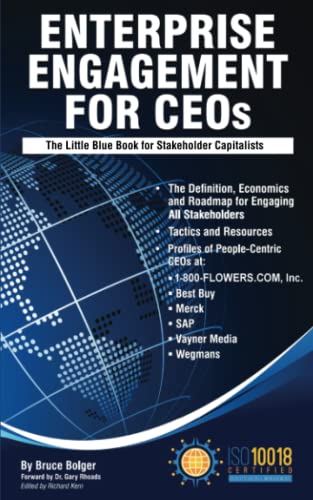
Through education, media, business development, advisory services, and outreach, the Enterprise Engagement Alliance supports boards, business analysts, the C-suite, management in finance, marketing, sales, human resources and operations, etc., educators, students and engagement solution providers seeking a competitive advantage by implementing a strategic and systematic approach to stakeholder engagement across the enterprise. Click here for details on all EEA and RRN media services.
1. Professional Education on Stakeholder Management and Total Rewards
Strategic Business Development for Stakeholder Management and Total Rewards solution providers, including Integrated blog, social media, and e-newsletter campaigns managed by content marketing experts.
4. Advisory Services for Organizations
Stakeholder Management Business Plans; Human Capital Management, Metrics, and Reporting for organizations, including ISO human capital certifications, and services for solution providers.
5. Outreach in the US and Around the World on Stakeholder Management and Total Rewards
The EEA promotes a strategic approach to people management and total rewards through its e-newsletters, web sites, and social media reaching 20,000 professionals a month and through other activities, such as:

Through education, media, business development, advisory services, and outreach, the Enterprise Engagement Alliance supports boards, business analysts, the C-suite, management in finance, marketing, sales, human resources and operations, etc., educators, students and engagement solution providers seeking a competitive advantage by implementing a strategic and systematic approach to stakeholder engagement across the enterprise. Click here for details on all EEA and RRN media services.
1. Professional Education on Stakeholder Management and Total Rewards
- Become part of the EEA as an individual, corporation, or solution provider to gain access to valuable learning, thought leadership, and marketing resources.
- The only education and certification program focusing on Stakeholder Engagement and Human Capital metrics and reporting, featuring seven members-only training videos that provide preparation for certification in Enterprise Engagement.
-
EEA books: Paid EEA participants receive Enterprise Engagement for CEOs: The Little Blue Book for People-
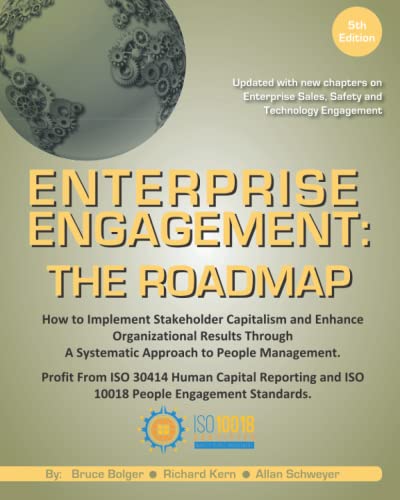 Centric Capitalists, a quick implementation guide for CEOs; Enterprise Engagement: The Roadmap 5th Edition implementation guide; a comprehensive textbook for practitioners, academics, and students, plus four books on theory and implementation from leaders in Stakeholder Management, Finance, Human Capital Management, and Culture.
Centric Capitalists, a quick implementation guide for CEOs; Enterprise Engagement: The Roadmap 5th Edition implementation guide; a comprehensive textbook for practitioners, academics, and students, plus four books on theory and implementation from leaders in Stakeholder Management, Finance, Human Capital Management, and Culture.
- ESM at EnterpriseEngagement.org, EEXAdvisors.com marketplace, ESM e–newsletters, and library.
- RRN at RewardsRecognitionNetwork.com; BrandMediaCoalition.com marketplace, RRN e-newsletters, and library.
- EEA YouTube Channel with over three dozen how-to and insight videos and growing with nearly 100 expert guests.
Strategic Business Development for Stakeholder Management and Total Rewards solution providers, including Integrated blog, social media, and e-newsletter campaigns managed by content marketing experts.
4. Advisory Services for Organizations
Stakeholder Management Business Plans; Human Capital Management, Metrics, and Reporting for organizations, including ISO human capital certifications, and services for solution providers.
5. Outreach in the US and Around the World on Stakeholder Management and Total Rewards
The EEA promotes a strategic approach to people management and total rewards through its e-newsletters, web sites, and social media reaching 20,000 professionals a month and through other activities, such as:
- Association of National Advertisers Brand Engagement 360 Knowledge Center to educate brands and agencies.
- The EEA Engagement widget to promote, track, and measure customers/employee referrals and suggestions that can be connected to any rewards or front-end program management technology.
- The Stakeholder Capitalism free insignia to promote a commitment to better business.
- The BMC Brand Club and transactional storefronts to educate corporate and agency buyers on the IRR market.
- The EME Gold program to educate the top 3% of promotional consultants on selling engagement and rewards services.


